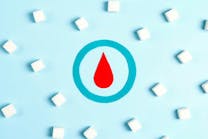Dick Rowland
Chief Executive Officer
The Binding Site
Provider of Freelite serum free light chain assays
Fred Stelling
Director
Global Hematology Marketing
Siemens Healthcare Diagnostics
Maker of ADVIA 2120i hematology system
Ralph Taylor
Vice President, Marketing and Medical Affairs
Sysmex America
Maker of Sysmex XE-5000 automated hematology system
Cindy Collins
Group Vice President
Beckman Coulter Cellular Analysis Business Center
Maker of UniCel DxH 800 Coulter Cellular Analysis System
Detect schizophrenia via blood test
My Health News Daily reported on Oct. 13, 2010, that a new blood-based diagnostic test may help assist psychiatrists in confirming recent onset of schizophrenia. To make a diagnosis, the biomarker profile of a suspected schizophrenia patient is compared with that of a patient with the disease. Scientists have found 51 biomarkers associated with the disease; and in a study led by Spain, blood samples from 577 patients in various stages of schizophrenia were measured against 229 people without the disorder. The test was accurate in diagnosing 83% of patients. The 51 biomarkers were still identifiable after some patients underwent four to six weeks of medication. The test was particularly effective in difficult cases with patients who had experienced multiple psychotic episodes.
The findings, reported in the May 2010 issue of Biomarker Insights, were not widely reported. The test called VeriPsych is not, say its researchers, meant to provide a definitive diagnosis of schizophrenia. Meanwhile, they are developing a test that would distinguish between schizophrenia and other mental illnesses like bipolar and major depressive disorders. Currently, patients with schizophrenia are diagnosed through interviews with a doctor and have to be suffering from two or more common symptoms for a month or less. Diagnosis can be tricky since schizophrenia can also mimic other conditions like depression, anxiety, or bipolar disorders. An estimated 2.4 million American adults (1.1% of people 18 or older) suffer from schizophrenia, according to the National Institute of Mental Health; fewer than half receive appropriate antipsychotic medication or psychosocial interventions, according to a July 2004 report by the Agency for Healthcare Research and Quality.
Watermelon reduces blood pressure
According to TopNews U.S. on Oct. 14, 2010, a new study conducted by food scientists at the Florida State University suggests that watermelon is beneficial in acting against pre-hypertension that gives birth to many heart diseases. The researchers in the study, which appears in the American Journal of Hypertension, claim that they are the first to conclude that by taking doses of watermelon, health middle-aged men and women could find improvement in their aortic hemodynamics in pre-hypertension. The researchers used four men and five post-menopausal women, ages 51-57, with pre-hypertension who, for six weeks, were regularly given six grams of the amino acid L-citrulline/L-arginine from watermelon extract. In all nine patients, the study found, there was improvement in artery functioning and reduction in aortic blood pressure. The scientists hope to conduct the same study on a large scale based on the reported results from this preliminary study.
Weatherall studies tropical genetic blood diseases
Sir David Weatherall, now 77, Oxford researcher-physician, was among the first to use molecular biology tools to understand thalassemia. In a recent New York Times interview, Weatherall told Reporter Claudia Dreifus the high points of his biomedical career when he was in New York to receive the Lasker-Koshland Special Achievement Award for 50 years of international statesmanship in the field. His first experience came shortly after his medical training when he had to serve a compulsory military stint in Malaya. The Commonwealth army put him in charge of a pediatric ward there in a hospital for families of Commonwealth soldiers. In his spare time, he went to the biochemistry department at Singapore University Hospital where he worked with others for six months to solve the puzzle of a 2-year-old patient with profound anemia — the daughter of a Gurkha from Nepal. The diagnosis was thalassemia, a genetic disease thought to occur only in the Mediterranean. Thalassemia meant she did not live to adulthood, which happened to most sufferers in the 1950s.
Weatherall continued his research on thalassemia, becoming “hooked on genetic blood diseases.” He studied at Johns Hopkins University in Baltimore and found with his colleagues there that two main types of the disease existed due to defects in the alpha or beta chains. By 1974, he and others used that information to develop a prenatal test which showed the imbalance of chain production, and then identified a form of thalassemia with no alpha strand present at all, causing babies to be stillborn. He says the impact on families with children suffering from the disease hit him hard after he established a research institute in Sri Lanka. He wants to look into a form of Asian thalessemia where, he claims, there is a strong hint a high proportion of children might be able to go through life with low hemoglobin and without transfusions. He wants to find out if this form is genetic or perhaps these children are affected by their environment. His Lasker-Koshland prize, he says, will probably finance that research.





